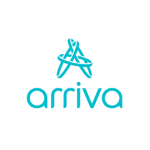In the first of a new series of monthly columns, uTrack CEO Eamonn Hughes explores his experiences working on real-world projects to deliver passenger growth

My background is a technologist for the passenger transport industry. For over a decade I’ve had the fortune of working with small private operators and the largest passenger transport groups in their global divisions, based in the UK, Europe and North America. This has given me a unique insight into the challenges and opportunities that technology can bring to the table as well as work with some pretty interesting people.
Each month I’m going to share my experiences working on real-world projects, what new technologies I believe are going to shape the industry, commentary on work I admire and some advice.
Fundamentals
So, let’s start with the most fundamental challenge the industry faces, we’re losing passengers daily. Why is it that with 56% of the world’s population living in cities (predicted to be 66% by 2050), the percentage of journeys by bus is falling? Even London is no longer the beacon of hope for the industry it too is seeing the drop in patronage.
The areas of punctuality, reliability, safety and fares are often highlighted by the industry as key factors in passenger retention and growth, but beyond these basics more needs to be done around the customer experience and product offering.
What amazes me when I visit a new client is how little they know about their customers. Having a Twitter account, Facebook page or even a mobile app is rudimentary in 2017, when you consider that the iPhone is now 10 years old.
Knowing who is travelling on your vehicles, when, and how often is key to building a long-term relationship. It enables adaptive pricing and aids in predicting future demand.
Where to start
So where to begin? The first step is consolidating all your datasets into a common view.
Disparate data sources are one of the first challenges to overcome when building a true picture of your customers. Future ticketing solutions, in particular account-based solutions will simplify this process, but in the interim using open-standards and/or APIs to your different systems will help.
Any solution that’s unable of sharing data with other applications needs to go… it’s holding back your business.
It’s time to build individual customer profiles that represents their typical travelling experience (punctuality for their stops) combined with their sentiment during periods of disruption. This will provide a much more accurate gauge of whether that person will continue to use the service on regular basis.
It’s no longer about how many buses ran to schedule and more about how many passengers had a positive experience.
Context is the key to make informed decisions about data… it’s time to get to know your customers.

























